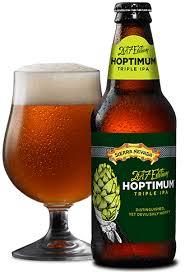 Last weekend, I ran 100 miles across Shenandoah National Park to celebrate my 50th birthday. It was the first time I had run 100 miles on my own and not as part of an organized event. It was quite fun and got me thinking about the whole idea of a do-it-yourself 100-mile run. While many of us are enamored, rightfully so, with some of the iconic races in our sport, there is something elegantly simple about just going out there and banging out 100 miles on your own. As I’ve reflected on the experience, I’ve thought about the three key components of a successful DIY 100 miler. So, for those of you who might want to try one of these yourself, here is my advice with a little reporting from my experience sprinkled in:
Last weekend, I ran 100 miles across Shenandoah National Park to celebrate my 50th birthday. It was the first time I had run 100 miles on my own and not as part of an organized event. It was quite fun and got me thinking about the whole idea of a do-it-yourself 100-mile run. While many of us are enamored, rightfully so, with some of the iconic races in our sport, there is something elegantly simple about just going out there and banging out 100 miles on your own. As I’ve reflected on the experience, I’ve thought about the three key components of a successful DIY 100 miler. So, for those of you who might want to try one of these yourself, here is my advice with a little reporting from my experience sprinkled in:
1. Pick a course that has meaning to you.
Choosing a course for your 100 miler should be the first thing you do. In my case, I chose a point-to-point course as I’ve always liked those and I chose a location near my home. I wanted to run on the Appalachian Trail (AT) as it has emotional meaning to me and I wanted to run through a national park to raise awareness for the plight of our federal lands. As a result of all of those factors, the 105-mile stretch of the AT through Shenandoah National Park seemed perfect. It also had ample places at which my crew could see and support me as well as a nice variety of terrain. Whatever you do, pick a course that will have some emotional significance to you as that will add value to the experience.
2. Identify a strong crew and pacer.
After you’ve figured out the course, it is imperative to dial in a strong crew and pacer. While you may be tempted to do the entire 100 miler solo, it is much more fun with a pacer. For my run, I recruited my good friend Bryon Powell to fly out from Utah and to run the final 54 or so miles with me. It’s good to have someone with whom you are compatible as well as someone who can, without a doubt, cover the necessary distance. For crew, I had my wife Shelly and sons Logan and Tully. Since they have crewed me for just about every 100 miler I have ever run, they were well equipped for the task and actually looking forward to doing so without all of the hubbub and distraction of an actual race. That, and they were able to enjoy a beautiful weekend in a national park.
3. Schedule it during the right time of year.
After lining up one’s crew and pacer and dialing in the course, it’s time to schedule your hundred. In many ways, this is the trickiest part because you have to consider weather, daylight, what else is going on in the area in which you plan to run, and the potential for any sort of event (wildfire, hurricane, and more) that could thwart your run. I chose late September in Virginia first because it was my 50th birthday weekend but also because it is a time of year where the humidity is a bit less than normal, the threat of rain not quite as significant as the spring or summer, and the daylight hours are about equal to the nighttime hours. For these reasons, it proved, in my case, to be the ideal time of year for this particular run.
All in all, I loved my first experience with a DIY 100-mile run and look forward to doing it again sometime. It is certainly different than an actual race and it is as much a mental test as it is a physical one, but at the end of the day, I remain every bit as satisfied with this 100-mile finish as I do about any of my other previous 34.
Bottoms up!
AJW’s Beer of the Week
 This week’s Beer of the Week comes from Taproom favorite Sierra Nevada Brewing Company in California. Their annual Hoptimum release just crossed my palate as part of my birthday celebration and was just outstanding. This Triple IPA is quite strong at 9.6% but does not taste at all boozy. Rather, it goes down smooth and fruity with just a touch of caramel at the end. Well worth the modestly high price tag of 12 bucks a six pack.
This week’s Beer of the Week comes from Taproom favorite Sierra Nevada Brewing Company in California. Their annual Hoptimum release just crossed my palate as part of my birthday celebration and was just outstanding. This Triple IPA is quite strong at 9.6% but does not taste at all boozy. Rather, it goes down smooth and fruity with just a touch of caramel at the end. Well worth the modestly high price tag of 12 bucks a six pack.
Call for Comments (from Meghan)
- Have you run a DIY 100 miler or something similar before? What did you do and what was the motivation behind it?
- What were some of the key factors that helped you get done running that many miles outside of the racing environment?
